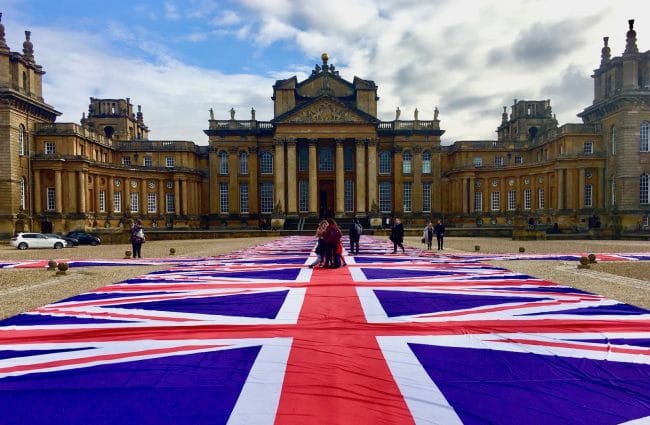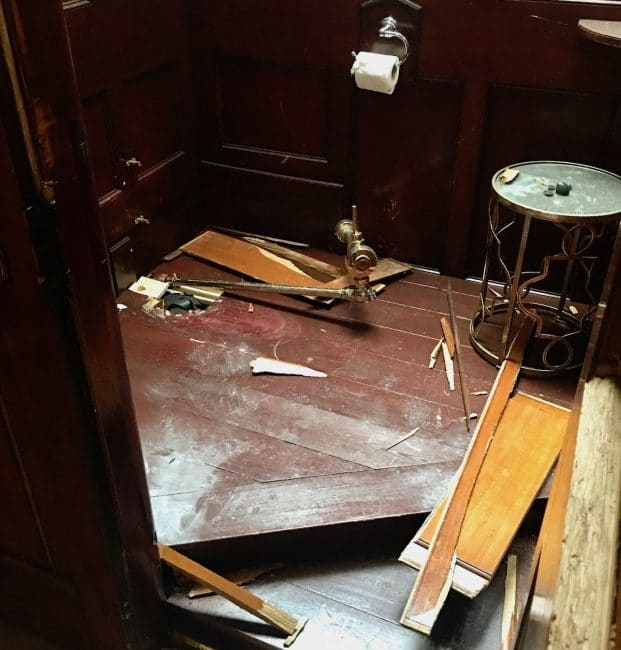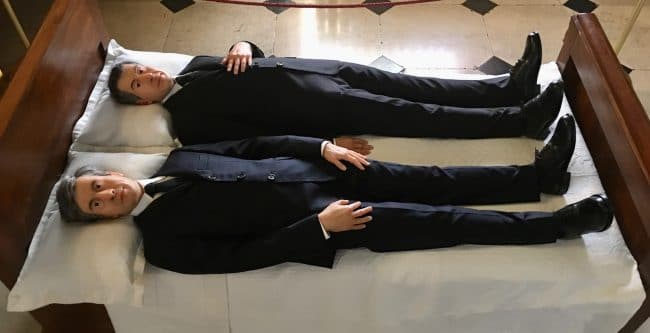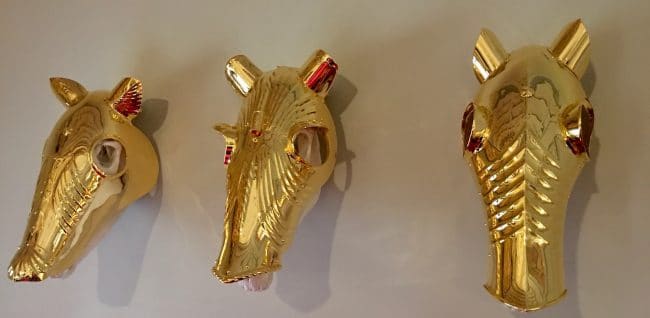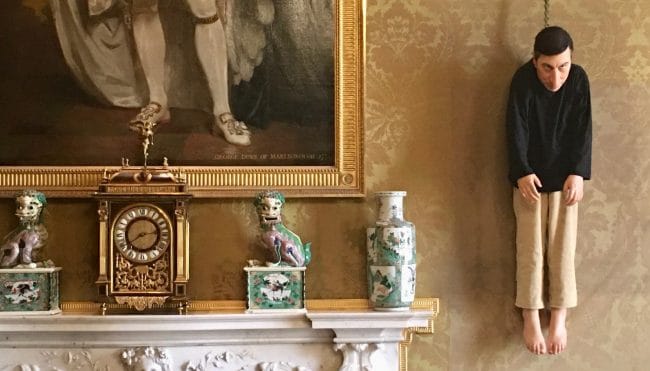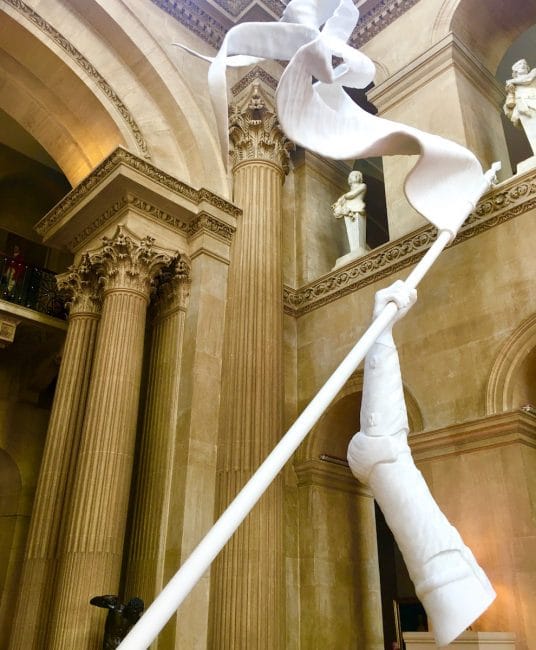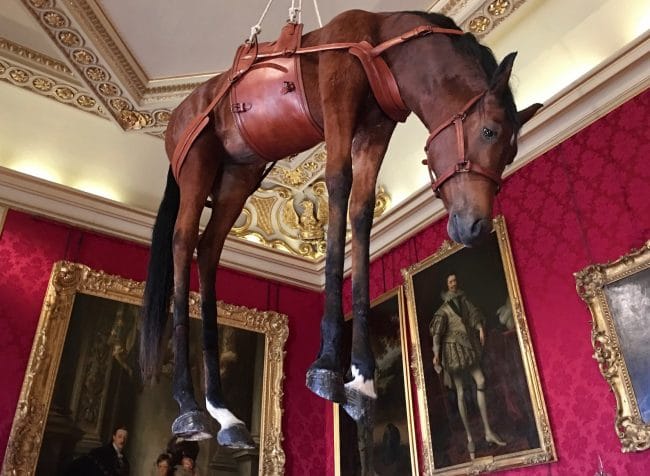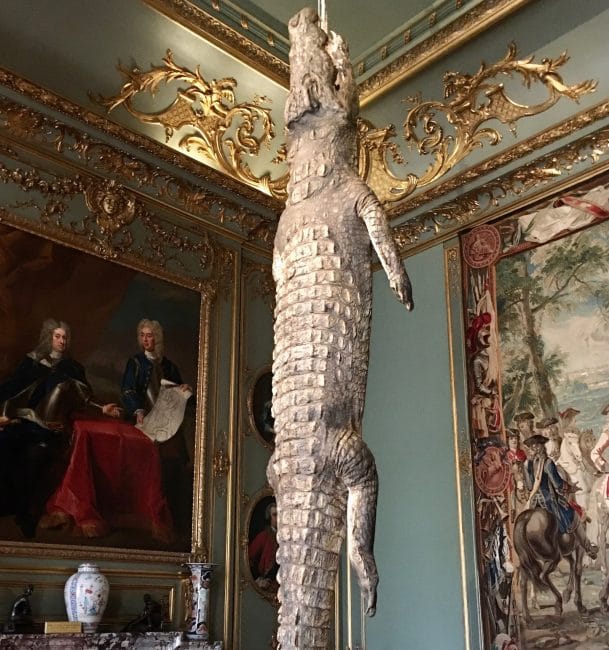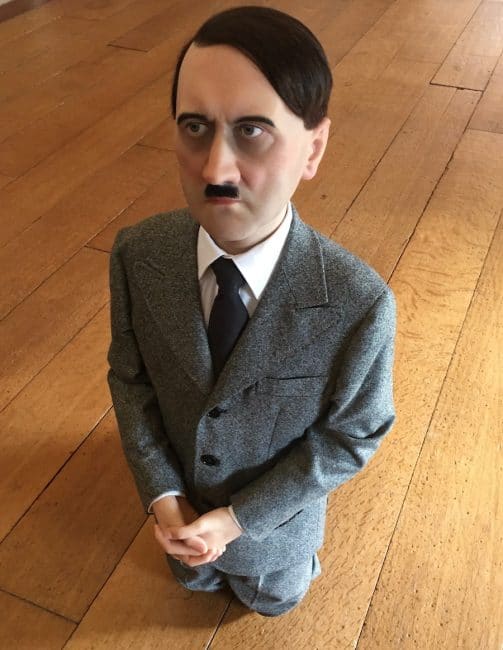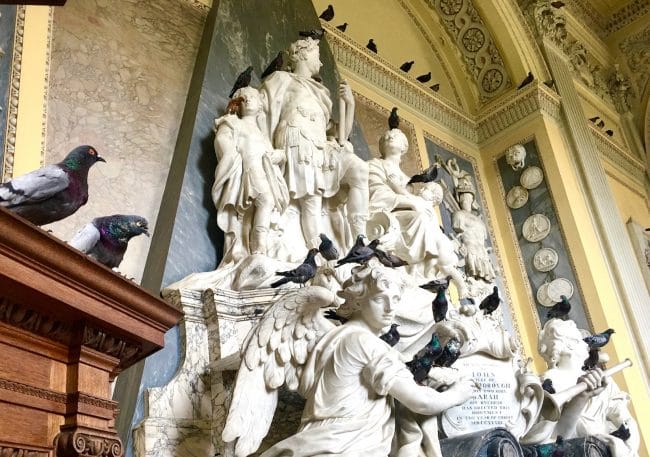It is fair to say that the new Maurizio Cattelan Blenheim Palace exhibition has been rather more notorious than the average. Entitled Victory is Not an Option has captured newspaper headlines ever since one of the art installations America – a gold toilet – was stolen following a recent break-in.
The empty wc with its smashed door, broken pipes and missing toilet has been left as an exhibit. It is actually rather a good one. Perhaps only Cattelan himself could have invented such an implausible scenario: an art installation featuring a stolen piece of sanitary ware. A perfect statement on the madness of the modern world.
We were ‘warned’ by a helpful Blenheim Palace attendant upon entering the exhibition that we might find it very ‘controversial’.
This would delight Cattelan as the controversy of course lies more with the spectators rather than in the art itself. The artist one famously stated that “reality is far more provocative than my art.”
Cattelan is an Italian conceptual artist who puts uncomfortable topics in front of us as in doing so invites us to examine our own opinions and have conversations about the nature of the world: past, present and future.
There are frequent themes of politics, religion, power and wealth – themes that of course sit uneasily with the exhibition’s location. Blenheim Palace was founded upon political patronage and war with occupants of great privilege and wealth. The juxtaposition of Cattelan’s art with this opulent surroundings brilliantly provokes deeper questions than the same works in a typical art institution or gallery.
Maurizio Cattelan Blenheim Palace brings us new works, created just for this exhibition, alongside some of the artists seminal pieces.
Entry is via the Great Court laid out with a huge Union Jack walkway. Cattelan is asking us to consider what it is to be British. A similar question is asked upon entering and being presented with the giant disembodied flag-waving arm of Joan of Arc.
In almost every room an artwork is installed amongst the gilt and finery of the palace, sometimes difficult to spot. Others are easier: the stuffed horse of Novecento (1997) dangles from the centre of the ceiling, as does the crocodile of Ego (2019). Both represent our abuse of the animal kingdom and its symbolism.
A couple more iconic pieces follow. La Nona Ora (1999) has pope Jean Paul II crushed my a meteorite – nobody is safe! – whilst the gathering pigeons of Others perch all over the chapel to watch, or is it to spy upon, us.
Him (2001) has a small penitent boy facing the end of the long library. Except we soon discover it is actually a diminutive Hitler, hands clasped, gazing upwards. What do we think now?
In the former home of Winston Churchill It is a poignant encounter between two wartime enemies and a reminder to beware the mistakes of the past.
It is a strong example of how the power of art can be multiplied in a relevant setting and an example of why this whole exhibition is so compelling and unmissable.
CELLOPHANELAND* were guests of Blenheim Palace.
For more information visit Maurizio Cattelan Blenheim Palace
See also our review of Ai Wei Wei at Blenheim Palace here





